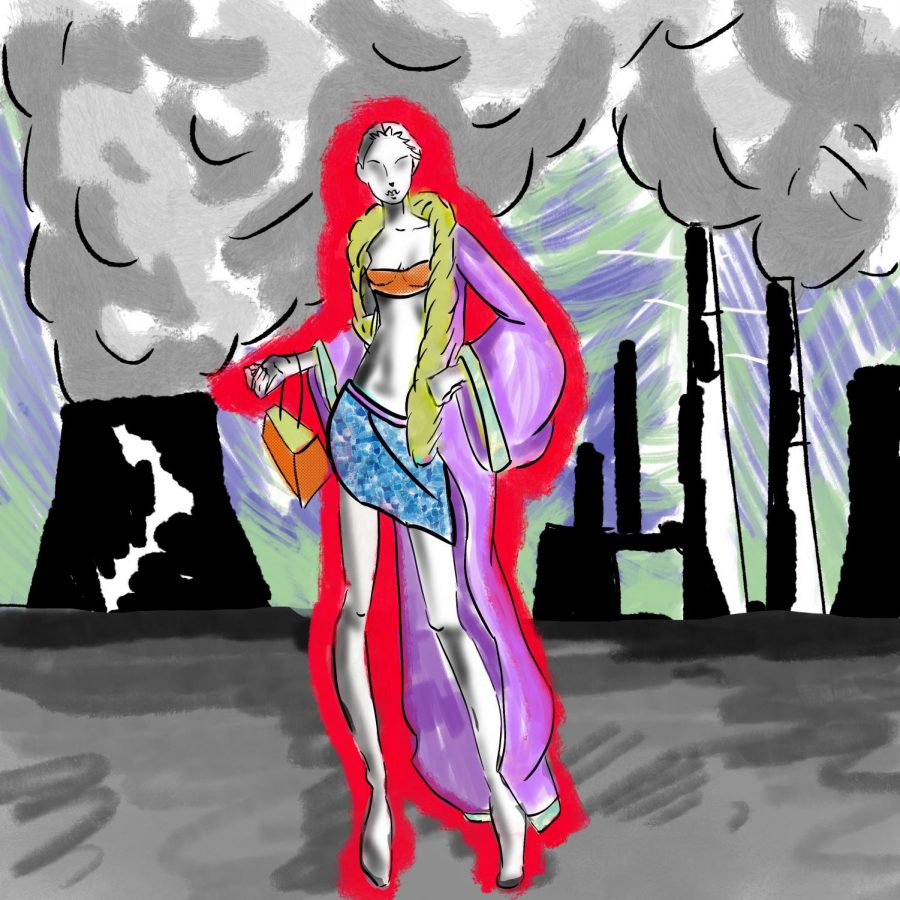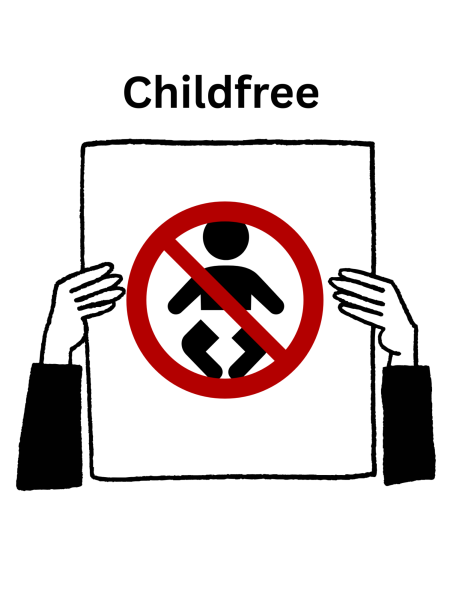Fast fashion: the less discussed environmental nightmare
Whether it is due to a lack of concern or just be unaware, fast fashion styles are damaging our environment.
April 13, 2020
Fast fashion can be defined as knock off clothing, derived from catwalks, and produced very quickly by competing fashion retailers. It is made cheaply, fast, and in bulk to keep up with trends and the demand of shoppers.
But what happens when all of the clothes don’t make it out of the retailer’s closet and into the customers’? The clothes are thrown out just as fast as they are made.
Fast fashion has inevitably impacted the environment. In order to make the clothing cheaply, synthetic fibers like polyester, nylon and acrylic are used. Because these materials are cheaply made and not designed to be sustainable or long-lasting, they later end up in the environment as tiny plastic microfibers. The fibers come off the clothes through typical wash and wear.
According to oceancleanwash.org, we eat, drink and breathe these fibers.
The clothes shed the microfibers into the waste water, typically while they are being washed, which then enters water reservoirs. Waste water treatment cannot filter out the fibers, so there is no way to prevent them from eventually being carried to the ocean, leading to the fibers being consumed by animals and pollution of natural habitats. Simply wearing synthetic clothes causes these fibers to be in our air, as microfibers are released by the friction created during movement. This pollution may eventually be detrimental to our lives.
Not only are the clothes damaging to the environment, but the people making the clothes aren’t ethically treated.
“Only an estimated 2% of fashion workers are paid a livable wage,” ABLE, a fashion and accessory company, states on its website.
The brand began publishing their wages to bring awareness to the oppressively low wages that many fashion workers endure to support themselves and their families. Fast fashion clothing is often produced in countries with fewer labor laws.
ABLE wants to protect and empower workers by encouraging consumers to ask other brands what their lowest wage is. They hope that asking the question will help draw attention to the issue so fashion workers may begin being paid a living wage. This started the hashtag #PublishYourWages.
Spotting a fast fashion brand may seem difficult, but many of these brands have a lot in common. A few things typically included in fast fashion to look for are:
Synthetic fabrics listed in the materials
This material includes but is not limited to nylon, acrylic, and polyester.
There are a few sustainable brands, like Marine Layer and Teva, that recycle polyester and other plastic materials to give a second life to materials that would otherwise end up in the ocean or landfills. Sadly, these ecofriendly companies can only recycle a small percentage of the overall amount of synthetic materials created.
Overseas manufacturing
Many countries overseas do not have the same labor laws as the United States protecting employees from exploitation, allowing many companies to make large profits off an underpaid, overworked labor force in these less monitored nations. A few brands that exploit their overseas workers are Forever 21, Fashion Nova and Zara.
An abundance of the styles often seen on runways or on the social media of celebrities
Fashion Nova is famous for making dupes of outfits seen on the celebrities like the Kardashians. Likewise, Zara has knocked off Balenciaga and Kanye West’s Yeezys. Old Navy has also copied a tee originally created by designer Carrie Anne Roberts. Each of these companies rely on cheap, synthetic materials to create the designer looks for consumers that are looking to shop with a smaller budget.
You don’t need to throw out your wardrobe if you want to transition from fast fashion to sustainable clothing. Instead, begin with the following suggestions:
Pick your clothes wisely
Try to only buy clothing that you see yourself wearing regularly. All too often, shoppers find themselves buying clothing that looks great on the rack, but hate it on themselves at home. A few everyday brands are Pact, Marine Layer and Teva for shoes and sandals.
As Sandra Bullock’s explains in “The Blind Side,” the store is where you love it most. If you don’t love it at the store, you aren’t going to love it at home.
Take proper care of your clothes in order to limit your waste
Oceancleanwash.org suggests filling up your washer with the maximum amount of recommended clothes per load. This will create less friction, and in turn release less plastic fibers into the waste water.
Resell old clothes and buy secondhand when possible
If you have clothing in good condition that you don’t wear, Apps like Poshmark, Depop, and even Instagram make it easier to quickly get your old clothes out of your closet and into someone else’s. Likewise, these are great places to begin looking for secondhand clothing to replace the now-empty closet space!
You may also consider donating clothes to the Bakersfield Homeless Center, the Salvation Army, or local thrift stores. A few thrift stores in Bakersfield are Throwback Junction, In Your Wildest Dreams Antiques and Consignments, and Goodwill. You never know, those donated pieces of clothing just might become someone’s new favorite outfit.
Buy clothes that are sustainably and ethically produced
Because the brands are sourcing fabrics naturally and paying their workers fairly, it does come with a slightly higher price tag. However, there are still some great affordable everyday brands you can choose from. This would include People Tree and Everlane.
Consider who made your clothes, what’s in your clothes, and how those clothes might be harmful to the environment
Consumer habits heavily influence company executive decisions. By avoiding purchasing unethical and nonrecyclable materials, it further encourages corporations to begin making the necessary changes to help further protect both the environment and employees. Some brands that are helping change the conversation include Womn and Los Angeles Apparel.
With an abundance of research available on the environmental impact of the fashion industry readily available, it begs the question: why are people still paying for fast fashion items?
“I shop fast fashion as well as thrifted, sustainable fashion too. It’s very difficult to not participate in fast fashion because it is cheaper than sustainable brands, and easier to access,” Sarah Atkinson, a junior English major at CSU Bakersfield, wrote on social media. She notes that she would much rather prefer a closet full of sustainable and ethical clothing, but expresses that it is an investment.
Some students at CSUB have already begun making the transition to more ecofriendly clothing.
“It’s hard not to buy into fast fashion, but I believe if we all at least do our best to switch to more sustainable and ethical clothing, it can still make a difference,” Natalie Frieson, a junior criminal justice major, noted on a Facebook discussion forum.
Many of the established companies have already focused on improving their own impact on the environment and society. These brands are making a difference by paying their workers fair wages, making clothes in smaller batches, spinning fabric from recycled material, and sourcing primarily natural resources that will reduce their carbon footprint.
Whether you buy an entire new sustainable wardrobe or just replace worn out clothing with new items from ecofriendly brands, every synthetic fiber counts. Everyone can still make a difference if we put in just a little extra thought into our purchases moving forward.









